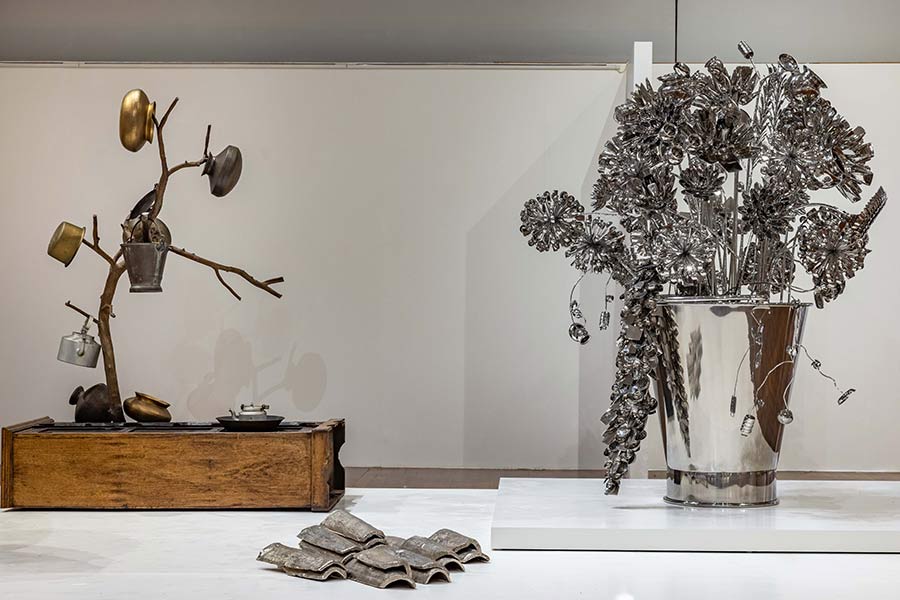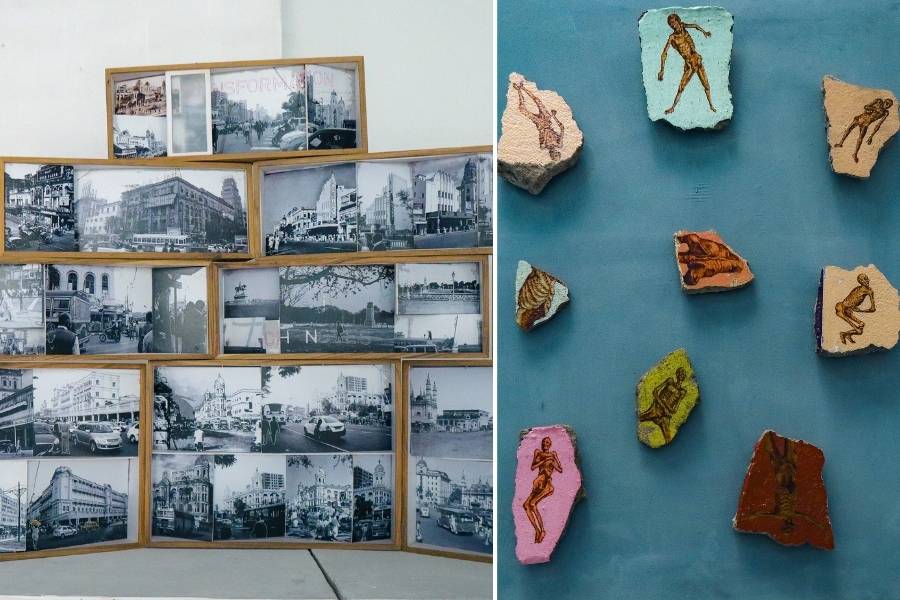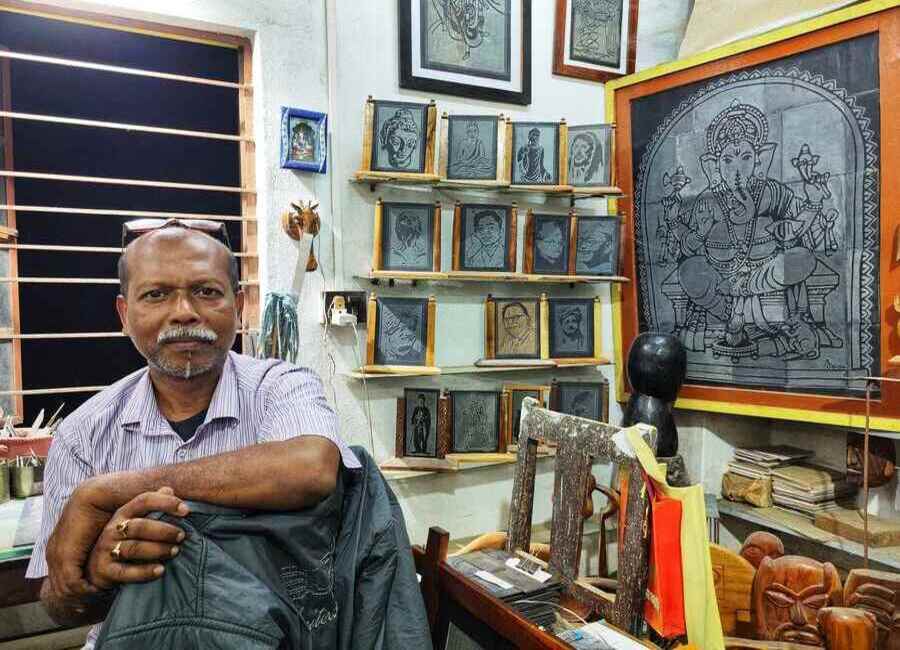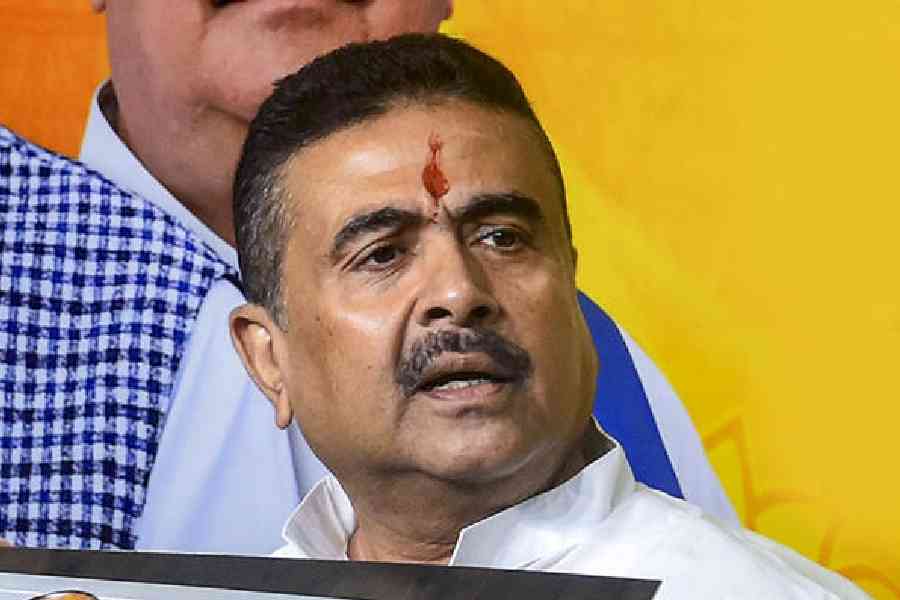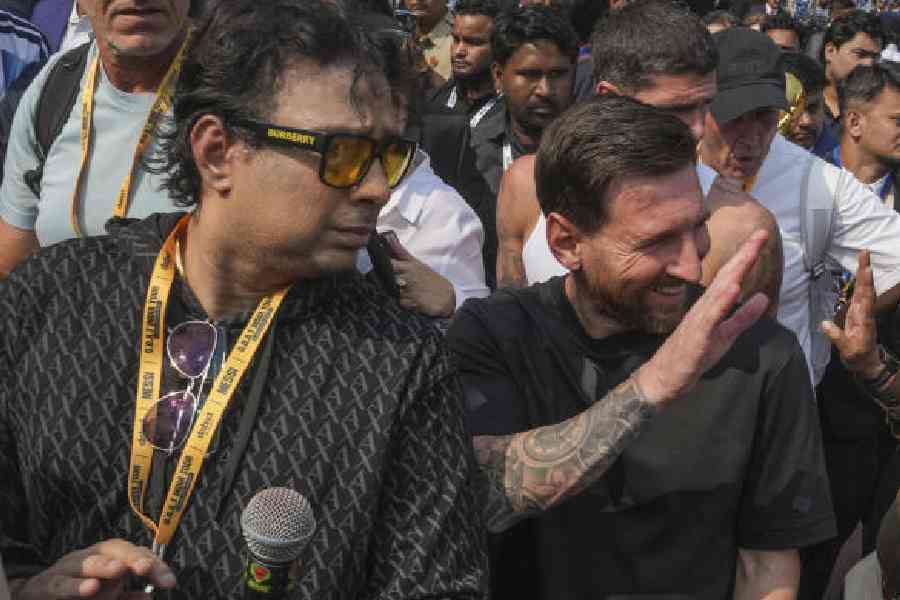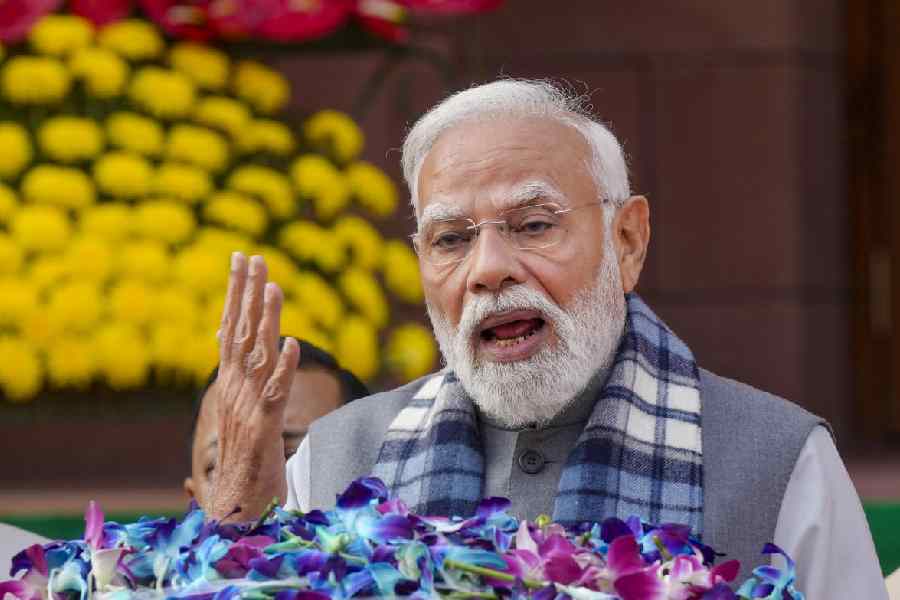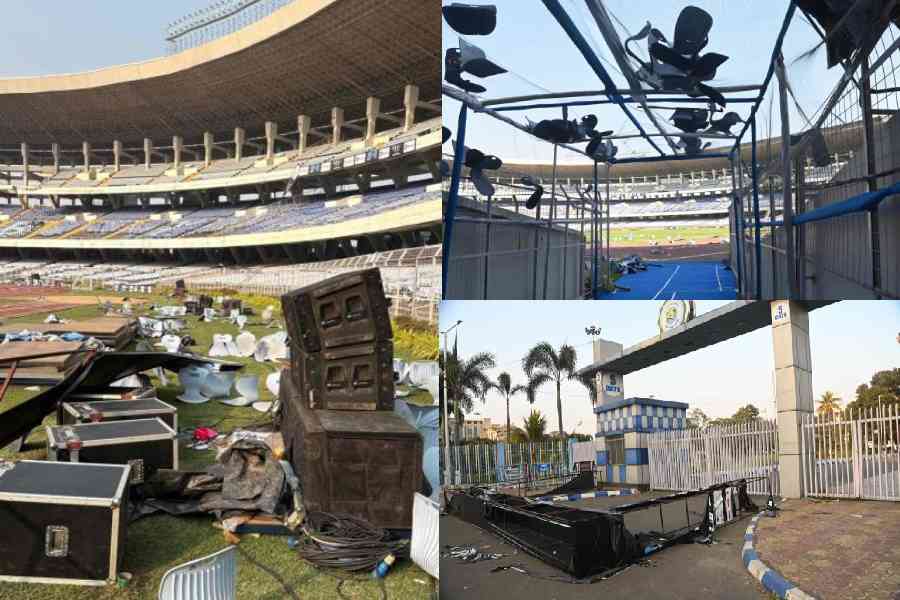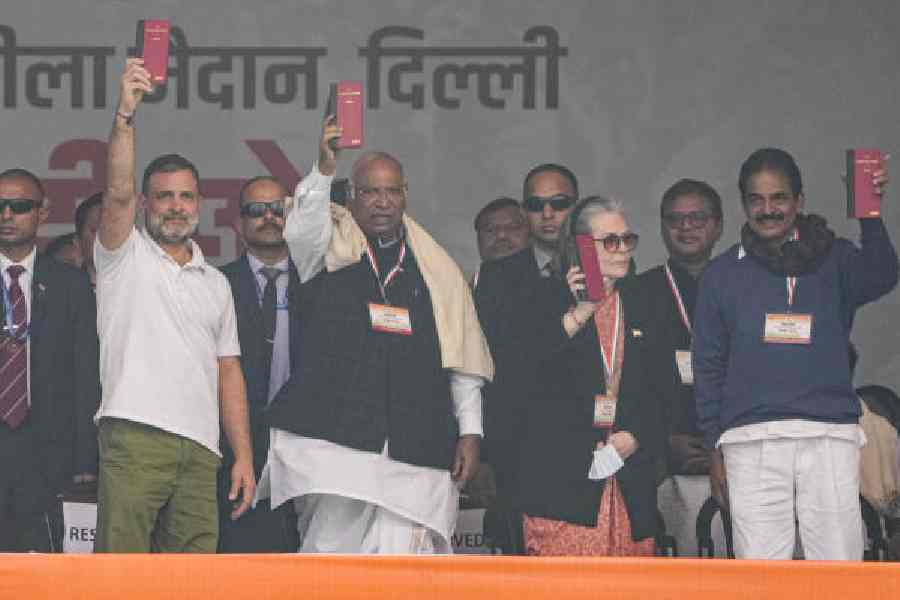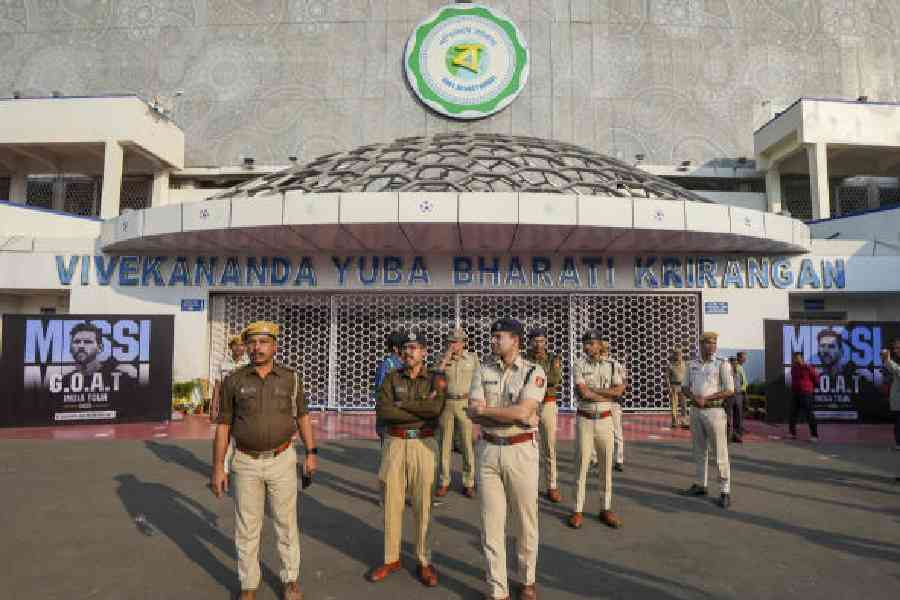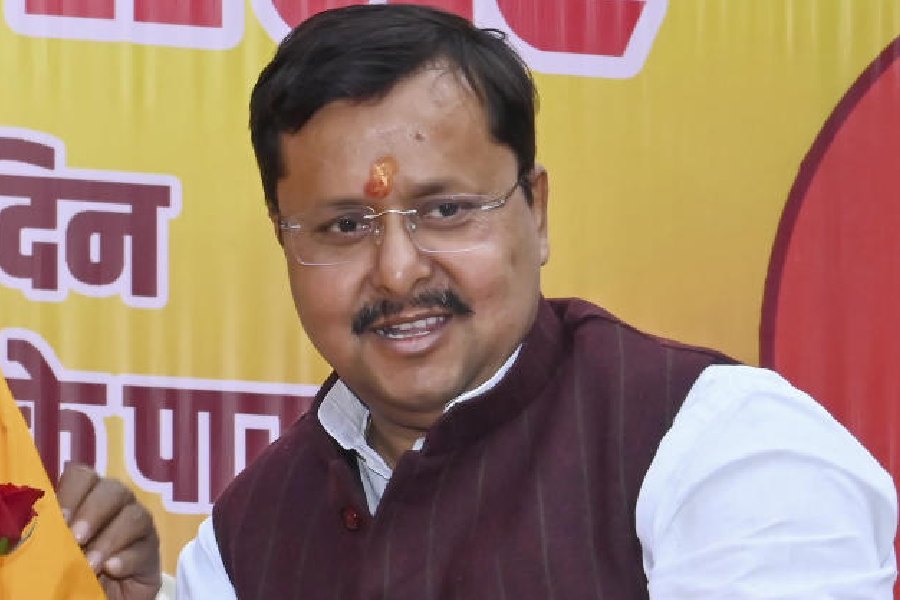The Bihar Museum in Patna, which opened its doors in 2015 is a storehouse of invaluable historical artefacts discovered in the region dating back from the earliest years of civilisation to circa 1764. Inside the museum is Subodh Gupta’s monumental exhibition. Evocatively titled The Way Home, this critically appreciated show was showing from November 9, 2024, until recently in different spaces at the museum. It is a venue that is more than up to the task — from the outdoors, where the monumental sculpture Yantra is strategically located, to the spacious and brilliantly illumined salons within, where 20 major sculptures (created between 2003 to 2024) occupy pride of place alongside the arresting paintings that cover the walls. These canvases mirror the stainless steel sculptures in shape and design. Even for viewers long familiar with Gupta’s medium of using household appliances and utensils for his sculptural compositions, the impact of the show is profoundly dramatic.
We have just arrived in Patna and are ushered into the chambers of Director General Anjani Kumar Singh, who tells us about not only Subodh Gupta’s project but also of how the Bihar Museum came to be built. This was a bureaucrat who understood the pulse and heartbeat of his people and was determined to make the space a world-class institution where visitors would come from different corners of the world. And as he walks with us, we see how his dreams have already materialised in the streams of visitors who are jostling around the many sections, but mostly in the halls showing Subodh Gupta’s works.
The artist has delighted visitors from his beloved state. They are astounded by the kinetic sculptures he has brought to the museum, his architectural installations including his famous Ambassador car and his shiny Bullet motorbikes (so commonly seen on Patna streets and alleys) that even have milk pails slung as if the doodhwala is about to set off on his morning rounds to make deliveries. So strongly do the works resonate with the milieu that the thali containing ‘dough’ neatly covered with a red-and-white checked ‘cloth’ created from fibre glass becomes an object of great curiosity with visitors. They try to touch the dough to see if it is really the atta they make rotis with, causing consternation and amusement with the security guard.
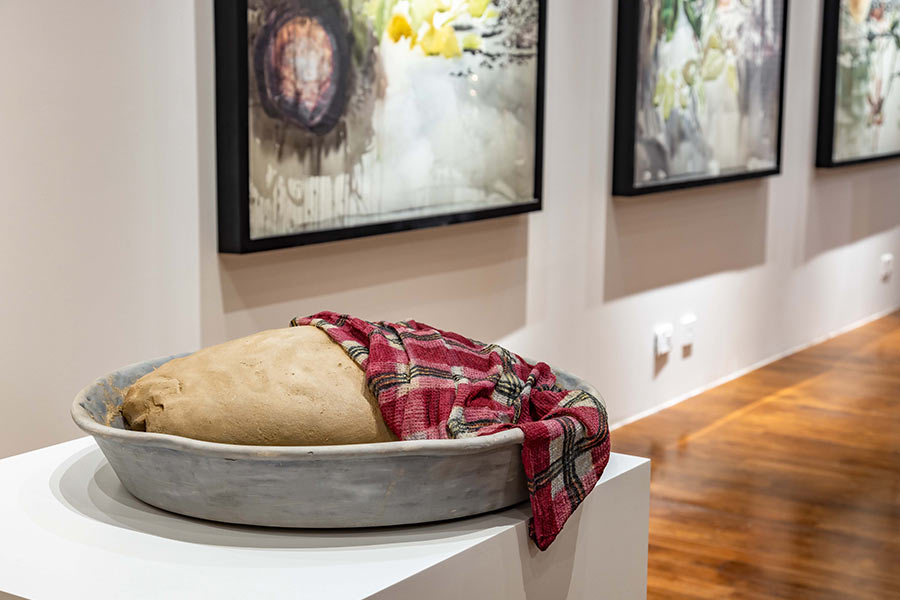
‘Thik Paas Me’ 2012
While the critics and art historians following Gupta are aware of the artist’s admiration for Marcel Duchamp that allows found objects to be transformed into artworks and view his works through different lenses, it is delightful to see the families gathered around objects or installations that are familiar to them from their own environment. Perhaps this is the single most important accomplishment of the show The Way Home, the fact that Subodh Gupta has brought artworks home to Patna, to share with his own people. Peter Nagy writes, “Probably the simplest work in the exhibition is a door that has been cast in bronze, complete with frame and knob with a keyhole. Yet as a metaphor it is deeply complex, as the transformation each one of us goes through in the journey of life.” The trajectory of the artist’s life is not forgotten, and he has borrowed an early self-portrait he had painted (using cow dung) captioned Bihari from a collector-friend, so he could include it in this show.
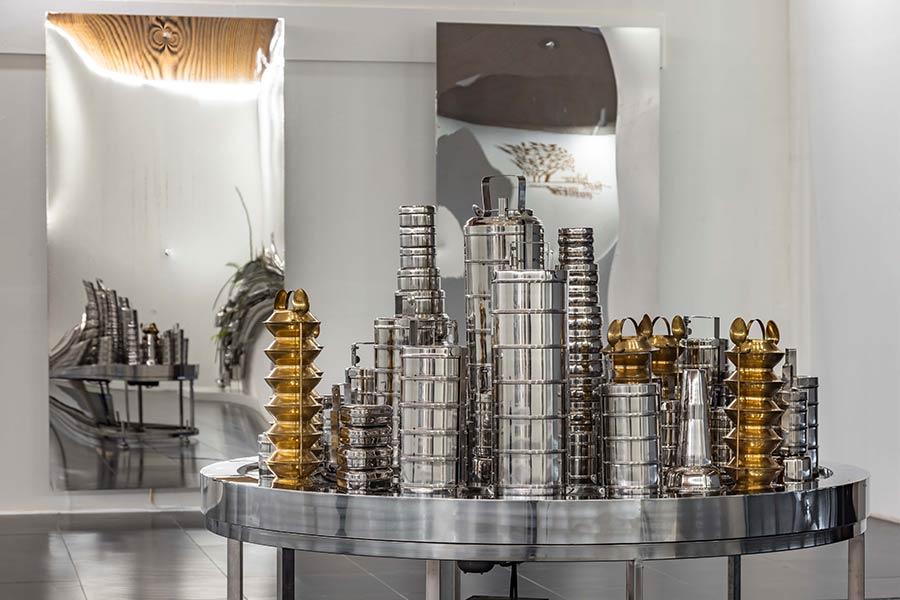
‘Parikrama’ 2010
As Anjani Singh tells us, for both the artist and curator, the fact that it involved artistic collaboration between two people belonging to Bihar, who literally spoke the same language, had made the project especially significant. While the exhibition shows the artist’s practice and the influences he imbibed and transformed, the artworks also reflect how Subodh’s own trajectory evolved as he rose in the eyes of the international art world, becoming a familiar presence in biennales and exhibitions across the world. Yet, when we met Subodh at the Bihar Museum, interacting with viewers and in the company of his old Art College friend Shailendra Kumar, it was a person who was completely at ease and at home. That was what struck us through the afternoon we spent together, the fact that, despite the international success and glory he was wont to receiving, Subodh Gupta belonged here and, in a sense, so did the exhibition The Way Home.
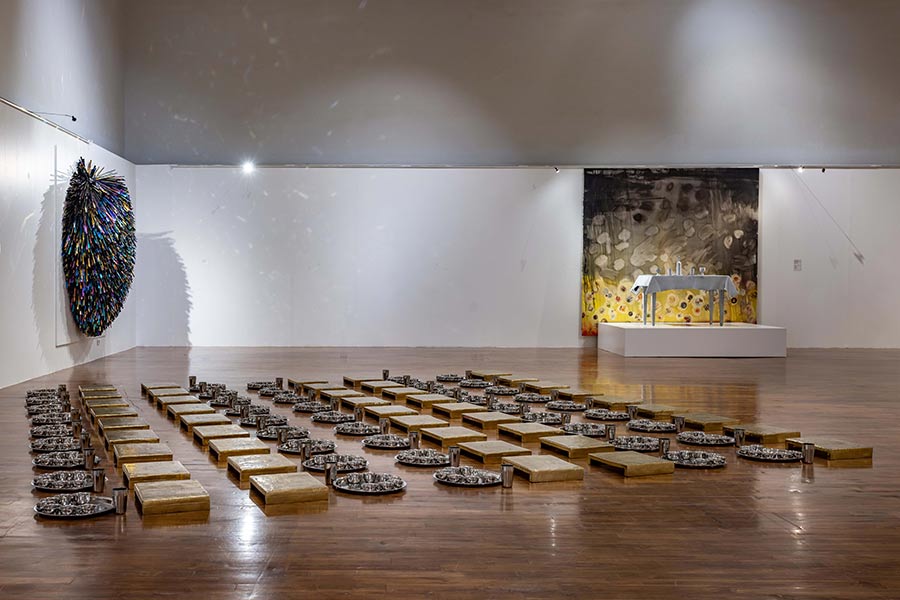
‘School’ 2008; and on the walls — (left) ‘Rainbow’ 2024 and (right) ‘Safar’ 2011-2023
As he put it in an earlier conversation, “I like the stage and drama; so, you will see the same thing in my work. It’s a kind of stage. At the same time, I come from a lower middle-class family and common things attract me; common people attract me. I am very comfortable talking to the common man … I think that’s the strength of my work. It comes from the common people. And drama in India, especially something like Bollywood, realises the common man. Tragedy, irony, love, war; we go through all the political and non-political beliefs. That is why there is a ‘hungry’ god and a cascade of utensils.” (The Khoj Book)
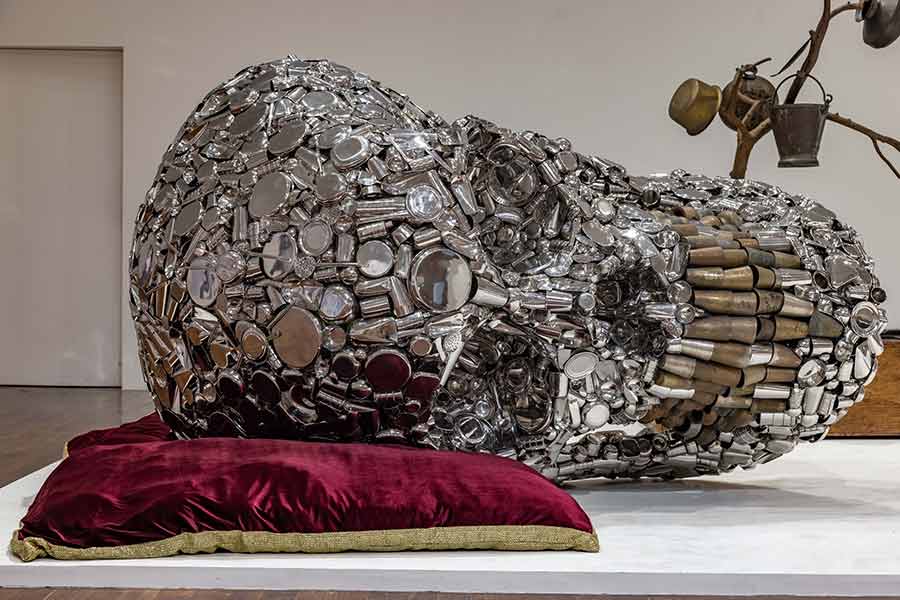
‘Gehri Neend’ 2014
As we were leaving, a group of excited people caught our attention. It was Subodh Gupta’s installation of a huge vessel which contained within it smaller utensils and appeared to be heaving if one went too close. The excitement was palpable. ‘That bartan is breathing, look!’ a little boy squealed to his parents. That then was the effect and drama the artist had desired, and the visitors at the Bihar Museum responded aptly. This was after all a place where the ancient sculpture of Didarganj Yakshi and Gupta’s modern-day Yantra were comfortably cohabiting at the moment. “Ek sukoon miltaa hai,” said the artist, “It feels great to be exhibiting after 30 years in a space like Bihar Museum, where the contemporary art practitioners are invited to show alongside the traditional and ancient masters of art. My heart fills with joy to see the response I am getting — it feels like homecoming, in the truest sense.”
Ina Puri is an arts writer, independent curator and collector.

